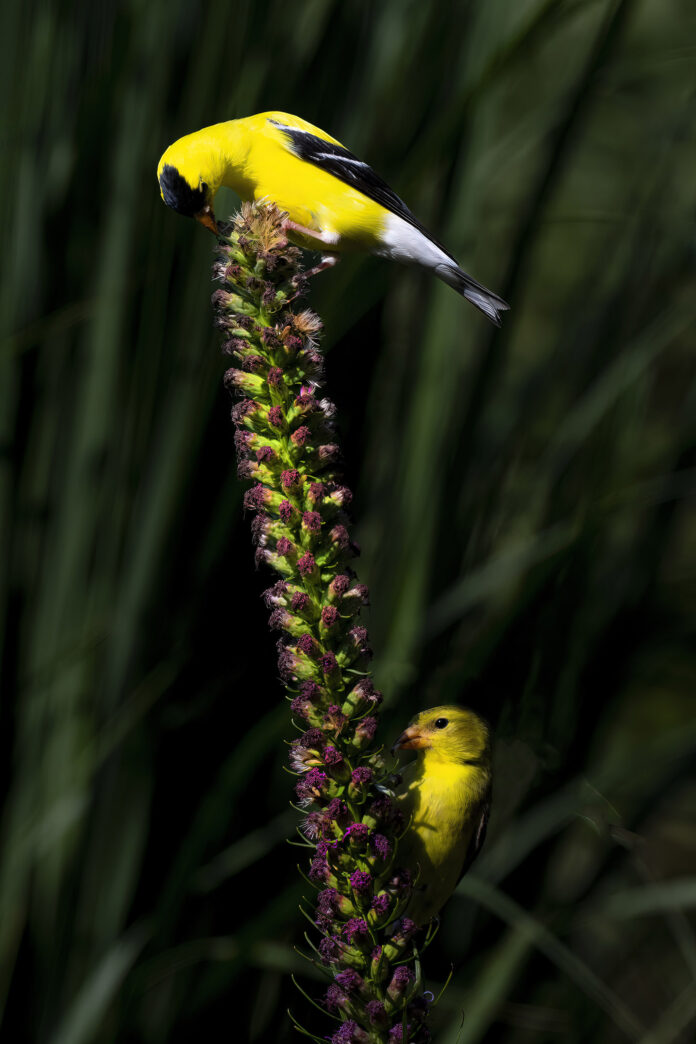Time for goldfinches to nest in meadows, prairies
American goldfinches look and act like the happiest birds of our summer meadows and prairies.
It starts with the bright yellow plumage of the male goldfinch that literally glows, seemingly more so in contrast to its rich black wing bars, forehead and tail. Active and acrobatic, these small birds even seem to have fun as they flit above our meadows and prairies in an undulating fashion, their flight noticeably rising and dipping in synch with alternating wing flaps and glides.
The female, though beautiful in her own way, is dressed down a bit, presumably to be more camouflaged in her role as nest builder and in laying and incubating the eggs. The male’s role is to bring her food – the goldfinch diet is almost exclusively seeds — as she sits on the eggs. His role will get much larger with the responsibility of feeding the nestlings after they hatch.
Most of our nesting birds have already completed the task of raising their broods, but now is goldfinch time. They wait until about now to nest because is the best time for the plants of our meadows and prairies – thistles, blazing-stars, thistle and others – to produce the seeds the goldfinch prefer.
In the image, a male goldfinch balances itself atop the heavily-flowered stem of dense blazing-star while its mate feeds further down the stalk. Dense blazing-star is among the common wildflowers native to our tall-grass prairies.
Text and photos by Art Weber, Metroparks Toledo nature photographer





















